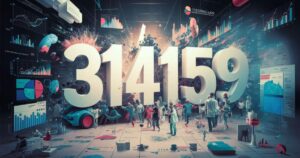Have you ever been driving down the road in Illinois and noticed a license plate with the letters “Fp” on it? You may have wondered what those two mysterious letters could possibly mean. Well, my friend, you’re about to unravel the enigma of the Fp license plate!
We’re all familiar with the standard license plates adorning most vehicles on the roads, but have you ever stopped to think about the significance behind those seemingly random letters and numbers? Each character on a license plate carries a distinct meaning, providing valuable insights into the vehicle it represents. So buckle up, and let’s dive into the fascinating world of license plate codes, specifically the Fp designation on Illinois plates.
Illinois Licence Plate Letter Meaning
License plate letters have distinct meanings in Illinois. The arrangement of letters on a license plate represents information about the car or its owner, not just a chance occurrence. These letters could have the vehicle owner’s personalized message, special permits, or the county of registration written on them.
Comprehending the characters on the license plate enhances the vehicle’s visibility on the road. Law enforcement and other drivers can rapidly identify and classify automobiles based on their license plates easily and efficiently.
| Character Type | Description | Example |
| Letters | Alphabetic characters are used in license plates. | A, B, C, etc. |
| Numbers | Numeric characters are used in license plates. | 1, 2, 3, etc. |
| Special characters | Additional non-alphabetic characters are sometimes used. | – (dash), (comma) |
| Plate size | The physical size of a license plate. | 12 inches by 6 inches |
| Plate material | The material license plates are made from. | Aluminum, plastic, etc. |
| Location | Where license plates are attached to a vehicle. | Front and back of a car, both sides of a motorcycle, etc. |
Comprehending License Plate Numbers
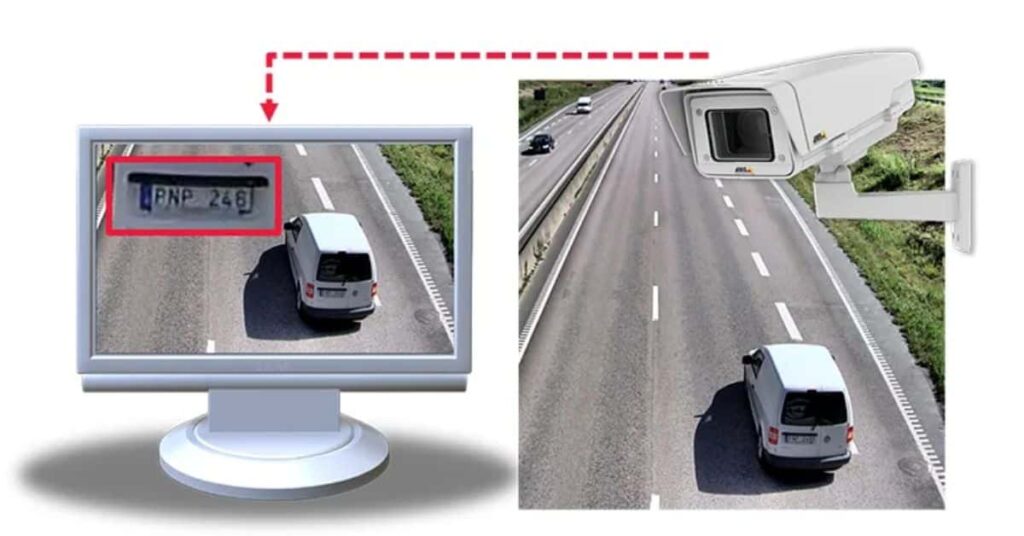
Vehicle-related information can be obtained from license plate codes. These license plate codes are made up of a combination of letters and numbers. They facilitate the identification of the registration state or nation, which helps law enforcement and traffic management officials.
Every area has a distinct set of license plate codes that make identification simple. Because they allow law enforcement to track down automobiles and preserve traffic safety, these codes are essential. To ensure efficient communication and roadside regulation, both drivers and authorities must comprehend license plate codes.
Purpose of License Plate Numbers
License plate numbers serve several important purposes:
- Identification: Each license plate number uniquely identifies the registered vehicle it is assigned to. This allows easy identification by law enforcement and authorities.
- Jurisdiction tracking: The design and numbering system of license plates indicates the state, province, or other jurisdiction where the vehicle is registered. This helps authorities verify registration and insurance details.
- Toll payment: In some areas, license plate numbers are associated with toll payment accounts so vehicles can pass through toll booths without stopping. Automatic license plate recognition cameras match plates to payments.
- Privacy: Using license plate numbers allows drivers to retain some anonymity when in public. Details like names and addresses are not openly displayed unlike some other vehicle identification systems.
- Stolen vehicle tracking: When a vehicle is reported stolen, law enforcement enters the license plate number into a national database. This allows authorities nationwide to identify and recover the stolen vehicle.
Components of a Typical License Plate Number
License plate numbers are typically made up of combinations of letters and/or numbers. Some common components of a license plate number include:
- Registration identifier: A prefix or unique set of characters indicating the registration authority or county/state that issued the plate.
- Serial number: A unique multi-character code that identifies the specific vehicle/owner combination.
- Validation marker: A character or set of characters at the end of the plate indicating the date of registration validation or renewal.
- Type identifier: Numbers or letters used to distinguish different types of vehicles (e.g. commercial, motorcycle, taxi).
- Personalization: In some areas, registration owners can pay an extra fee to personalize their plates with alternative letters/numbers.
Decoding Location Information from License Plate Numbers
The registration identifier portion of a license plate number can provide important clues about where the vehicle is registered. Law enforcement and other authorities can deduce the following from a plate’s registration identifier:
- State/province: Each jurisdiction has its own unique prefix or numbering scheme. For example, plates starting with “C” are from California.
- County: Some states further segment plates by county using one or two letters/numbers for the county code.
- City/locality: Special plates are issued in some areas that identify the specific city, town, or local registration authority.
Knowing the registration location from the plate number allows authorities to quickly look up important ownership and insurance details if the vehicle is stopped, tolled, or reported elsewhere. It provides a valuable clue for tracking inter-jurisdiction vehicle movements and stolen vehicles.
Identifying Symbols on License Plates
In addition to the letter sequences, license plates often incorporate symbols or graphics that further reinforce their meaning. In the case of “Fp” farm plates in Illinois, you may notice symbols such as tractors, plows, or crops adorning the plates, leaving no doubt as to their agricultural designation.
These symbols serve as visual cues, making it even easier for drivers and authorities to quickly identify the purpose of the vehicle, even from a distance. They add an extra layer of clarity and ensure that no one mistakes an “Fp” plate for a standard passenger vehicle plate.
Interpretation Of Illinois Plates’ Fp
Now that you know what “Fp” stands for on Illinois license plates, let’s delve a little deeper into the specifics of this designation. According to Illinois state laws and regulations, a vehicle must meet certain criteria to qualify for the “Fp” farm plate.
First and foremost, the vehicle must be primarily used for agricultural purposes, meaning that more than 50% of its operation is dedicated to farming activities. This could include transporting crops, livestock, or farm equipment between fields and markets, or engaging in other tasks directly related to the production of agricultural goods.
What Does Fp License Plates Look Like?
Now that we’ve covered the meaning and requirements behind “Fp” plates, let’s take a closer look at what these plates actually look like. While the design may vary slightly from year to year or based on special editions, Illinois farm plates typically feature a distinct color scheme and layout that sets them apart from standard passenger plates.
Many “Fp” plates in Illinois feature a green and white color combination, often with the letters “Fp” prominently displayed in green at the beginning of the plate. The remaining characters, typically a combination of numbers and letters, are displayed in a contrasting color, making them easy to read from a distance.
Importance Of Letter Sequences
The letter sequences on license plates play a crucial role in vehicle identification, tracking, and regulation compliance. These codes are like a secret language that authorities, law enforcement, and even fellow drivers can decipher to gain valuable insights about the vehicles they encounter.
For instance, if a police officer spots a vehicle with an “Fp” plate, they immediately know that it’s likely being used for farming purposes, which may impact the way they approach the situation. Similarly, if you’re driving behind a vehicle with an “Fp” plate, you can anticipate that it may be carrying heavy agricultural equipment or moving at slower speeds to accommodate its cargo.
Spotting Fp License Plates On The Road
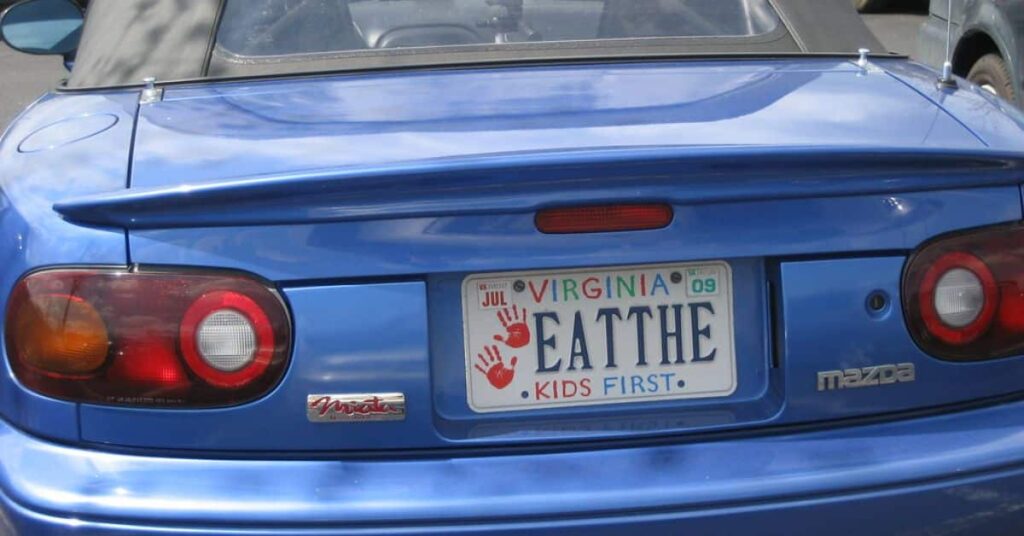
Spotting “Fp” license plates on the road can be an engaging game, especially if you’re driving through rural areas or regions known for their agricultural prowess. Keep your eyes peeled for those distinctive green and white plates, often adorned with tractor or crop symbols.
As you spot these plates, try to imagine the journey that the vehicle might be on. Is it transporting a fresh load of produce to market? Or perhaps it’s carrying equipment to a distant field, ready to till the soil for the next planting season.
Spotting “Fp” plates can also serve as a friendly reminder to exercise extra caution when sharing the road with these vehicles. Farm equipment and trucks laden with crops may require additional space or travel at slower speeds, so it’s essential to maintain a safe following distance and be patient when encountering them.
The Historical Background of License Plate Numbers
The use of license plate numbers can be traced back to the early 20th century when automobiles first began to populate our roads and highways. As the number of vehicles grew, it became increasingly important to develop a system for identifying and tracking them, both for administrative purposes and to ensure public safety.
In the early days, license plate numbers were often assigned in a sequential order, with each new vehicle receiving the next available number in the sequence.
What Does Fp Mean on Pennsylvania License Plates
The letters Fp on a license plate in Pennsylvania stand for “Fraternal Order of Police.” This mark means that the owner of the car is a member of the law enforcement group Fraternal Order of Police.
The Fp is frequently used on license plates by Fraternal Order of Police members to indicate their membership in the group and support of law enforcement. It acts as an outward reminder of their ties to the state’s fraternal organization of police officers.
License plate meanings: An Evolution
While the “Fp” designation on Illinois license plates may seem like a simple detail, it’s part of a much larger story – the evolution of license plate codes and designs over the decades. As transportation and vehicle regulation needs have changed, so too have the ways in which we identify and classify vehicles on the road.
What Does Fp On A License Plate Mean?
The letters “FP” indicate a vehicle’s farm plate registration status. Farm plates are a specialized registration for agricultural vehicles used primarily for farming tasks. To qualify, over half of a vehicle’s usage must support the production or transport of goods between farms and markets. The lower fees help reduce operating costs for vehicles crucial to farm operations.
Seeing “FP” on a plate provides quick insight into its use. It signifies the vehicle mainly transports agricultural equipment, livestock, or crops as part of a farming business. The clear designation benefits both farmers and other drivers with a brief identification of a vehicle as certified for agricultural transportation needs.
Understanding DMV Codes in Illinois
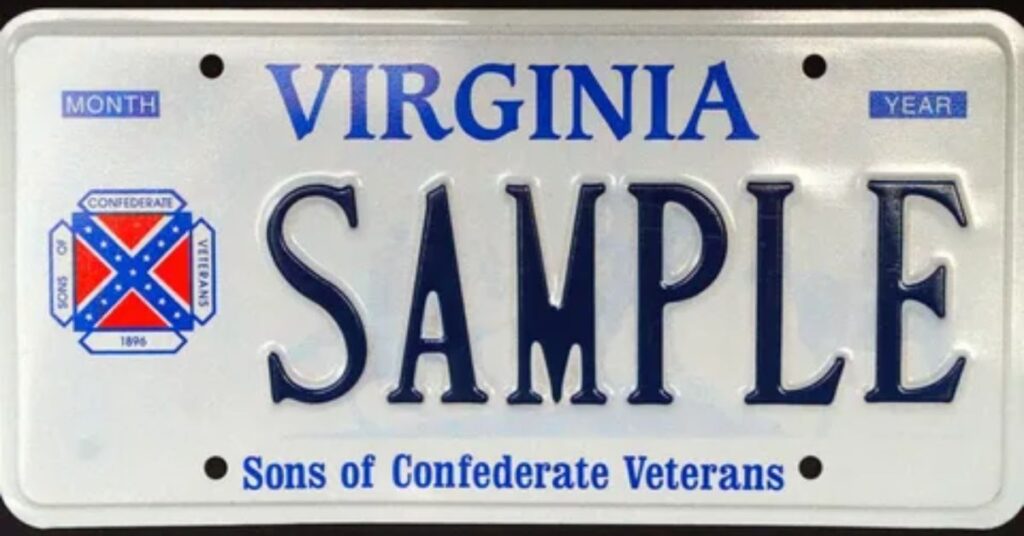
It is simple to decipher Illinois DMV license plate codes. Important details about the car, such as its registration status and expiration date, are contained in the codes. Drivers may rapidly verify if their license plates are legitimate and in compliance with requirements by learning these codes.
For license plates, the Illinois DMV uses a clear coding scheme. Every code provides certain information, which makes it simple for both drivers and law enforcement to understand the important characteristics of a car. Maintaining awareness of these codes guarantees a seamless and law-abiding driving experience on Illinois’s roadways.
Common Misconceptions About License Plates
Many people have misconceptions about license plate rules and requirements. Some think plates need to be replaced yearly but most states do not require this. Plates typically only need replacing if damaged, faded, or unreadable. Another misbelief is that specialty plates cost more annually. While a few have fees, regular plates and most specialty plates have identical renewal costs.
Another false notion is plates must show the current year. Most states no longer demand a year sticker on the plate. Instead, the registration year appears when you renew your registration. Some incorrectly think expired decals mean the plate is also expired. The decal signifies the registration is current, not the plate itself.
Legal Implications of License Plate Codes
License plate codes allow quick identification of vehicle type but also have legal significance. Registration details tied to codes ensure road laws are followed. Plates displaying expired tabs or improper types could mean violations.
Lawmakers design plate codes within each state’s licensing statutes. Requirements around valid displays, content policies, and expiration protocols differ environmentally but universally affect legal vehicle operation. Proper adherence prevents unwanted legal consequences.
Purpose of License Plate Codes
Beyond aesthetic plate designs, codes serve functional purposes. They immediately signal registration status to authorities without confronting drivers. Codes also ease administrative tracking of vehicle owners and tax collection and prevent fraud.
Signifying vehicle class assists fair road usage aligned with transport function. Motorcycles rely on lighter codes indicative of their exempt status from larger vehicle mandates. The letters “PM” on a license plate can indicate an exempt postmaster vehicle, empowering transparent identification under applicable transport laws. Codes empower transparent, frictionless transport interaction under the law.
Types of License Plate Codes
Jurisdictions utilize diverse common codes like farm, dealer, antique, RV, and model designators. Online plate guides explicate meanings but two-letter prefixes most directly point to registration class.
Sequential number combinations also expose age, plate type, and origin. Certain patterns reveal vintage cars, specialty distributions, or statewide sequential issuance. Plate codes economize road communications through quick informative cues.
Legal Framework
Registration statutes establish mandatory codes and number displays. Plates failing to follow formatting risk fees and impounds per transport administrations. Authorities reference encoded data resolving ownership, taxation, and operational disputes.
Codes fall under public records and open records laws. But access restrictions curb bounty hunters, stalkers or identify thieves misusing personal dates indirectly through plate trails. Law balances transparency with individual security.
Privacy Concerns
While registration serves the public interest, associated personal information requires respecting privacy rights. Data protection policies regulate coded plate records and restrict digitized tracking systems.
Still, covert surveillance photos of plates or traffic cam glimpses remain legal evidence of moving violations. But bounty hunters or private investigators pursuing plates for dangerous ends contravenes privacy ethics. Regulations curb license plate misuse.
Law Enforcement Use
Police leverage plate reader systems and handheld scanners to identify registrants. Roadside readers rapidly flag expired plates from patrol cars, aiding traffic law upholding.
However, location databases also enable decentralized monitoring when publicly searchable. Safeguards curb function creep into mass surveillance territory infringing civil liberties. Strong privacy undergirds law enforcement technology.
Impacts on Individuals
Beyond fees, faulty plates can impede travel if pulled over. Officers issue corrective deadlines avoiding marks on driving records.
Still, improper usage like improperly affixing falsified plates constitutes criminal intent necessitating legal consequences. Compliance supports smooth cooperation between road authorities and drivers under navigation rules.
Case Studies
Court cases explore tensions around plates balancing transparency with privacy. Recent legislation also modifies database access in response to changing security needs. Continuous civic dialogue shapes plate systems upholding both transport functioning and personal freedoms.
Future Developments
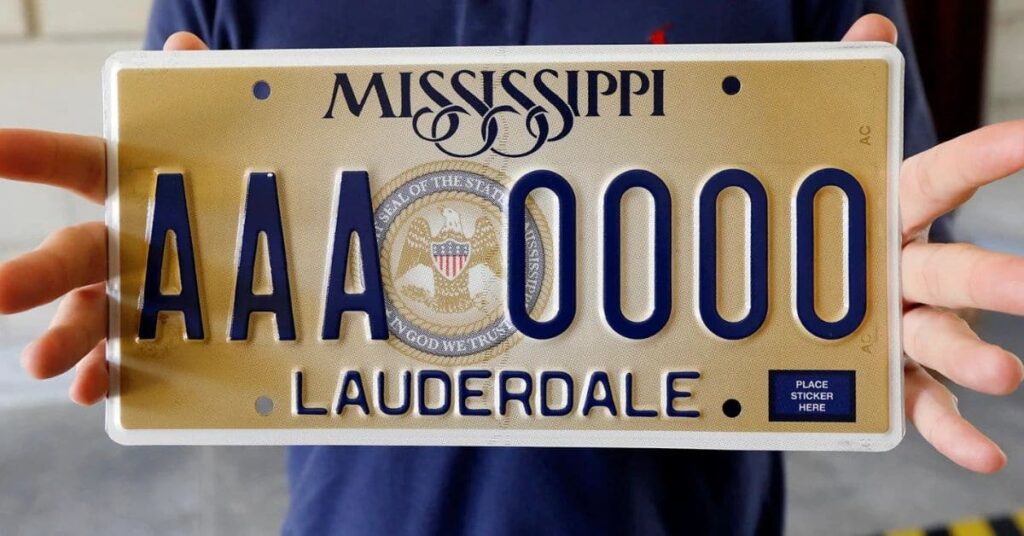
Auto-recognition and electronic plates may eventually transition encoding tasks. However innovative changes still require addressing liability and information protection issues. Plate systems will likely keep balancing access, accountability, and privacy through open policy improvements.
What Does MP Mean On A License Plate
The MP designation on some license plates indicates the vehicle has a motorcycle registration. Motorcycle registrations are usually cheaper than automobile plates. The MP code makes it clear at a glance that the registration is for a motorcycle rather than a car.
While motorcycles have different registration requirements than cars, the MP designation fulfills the same purpose as other plate codes. It provides context to law enforcement and helps identify the type of vehicle without stopping or citing it. Clear plate codes make the registration process simpler for officials and motorists alike.
Public Awareness and License Plate Interpretation
Many drivers do not understand plate codes or know their meanings. Not everyone recognizes what farm plates or commercial vehicle plates signify. Improving public education around license plate markings could prevent confusion.
Simple guides explaining common plate designations may help more people understand registrations at a glance. With clearer information, fewer motorists would misread plates or question the legitimacy of properly registered vehicles. Increased awareness of plate codes promotes safer roads through better registration comprehension.
Exploring Other License Plate Codes
Beyond MP and FP, numerous other codes exist. TR designates trailer plates while L designates low-speed vehicles. DE identifies dealer plates as useful temporarily. Some use RV or MH for recreational vehicles.
Antique vehicle plates may begin with the letter H while disabled plates start with the letter D. Historically significant or specialty commemorative plates can contain their identifiers too. The codes help registrars and law enforcement distinguish varied registration types.
Proper identification makes plate administration more organized while helping stop uncertain citizens from reporting legally registered vehicles. Clear signifiers contribute to efficient roadway interactions for all.
Role of Symbols in License Plate Identification
Symbols supplement alphanumeric plate codes to further specify registration categories. For example, some commercial truck plates contain a letter followed by a diesel or gas pump symbol. These graphics emphasize the vehicle’s commercial use beyond words alone.
Motorcycle plates may feature a motorcycle silhouette. Recreational vehicles like RVs could display small images of campers or travel trailers. Such emblems allow a quick recognition of the vehicle type from a distance, without needing to read the text on the plate.
Combined with alphanumeric codes, symbols visually communicate critical registration details. Their pictorial nature helps law enforcement and citizens alike to rapidly comprehend plate classifications from afar. Symbolism enhances the communicative power of license plates on roads.
| Symbol | Registration Type | Purpose |
| Motorcycle | Motorcycle plates | The pictographic symbol of a motorcycle helps identify the vehicle as a motorcycle at a glance instead of needing to read the text on the plate. |
| Pickup Truck | Commercial/Farm plates | A truck symbol preceding an alphanumeric code quickly conveys the vehicle is registered for commercial use without requiring reading small text. |
| Camper | Recreational Vehicle (RV) plates | An emblem of a camper helps regulators and others recognize the vehicle is an RV without obstruction like heavy snow potentially covering alphanumeric code. |
| Fuel Pump | Commercial plates for carriers | Symbols like a fuel pump before a code clarifies the vehicle is registered for carrying fuel without solely relying on letters/numbers that could be obscured. |
| American Flag | Patriotic/Memorial plates | Symbols can augment fundraiser plates by strengthening the message’s emotional resonance beyond plain words through recognizable emblems. |
| Handicap Symbol | Disabled plates | An internationally known symbol for disability after numbers supplement clarity that laws apply accommodating health needs. |
Analyzing Alphanumeric Combinations
Certain letter and number combinations denote age or other vehicle qualities beyond just registration type. In some locations, plates incorporate the current year’s target for newly registered cars.
Sequences counting down from a starting point may note when tabs first became due rather than the vehicle model year. Plates including vintage number groupings often belong to restored older automobiles.
Considering past plate format styles aids in recognizing a vehicle’s relative period. Combinations also reveal if plates originated through standard assignment or other specialty distribution methods. Patterns provide functional clues about vehicular history without requiring computer record lookups.
Connection Between Fp and Illinois
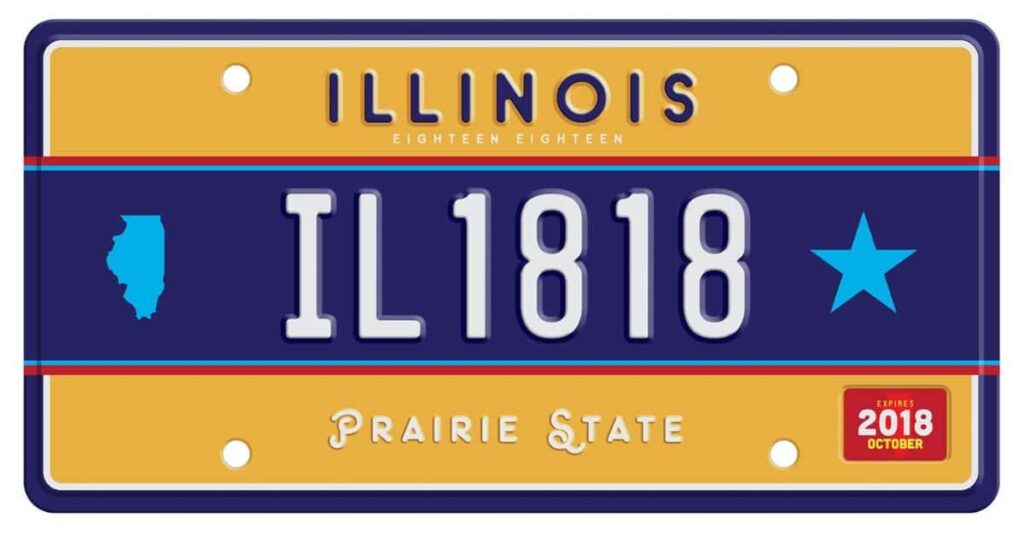
In Illinois, plates beginning with “FP” indicate the vehicle has a farm plate registration. Farm plates cost less to acknowledge farm vehicles’ agricultural functions. To qualify, over half of a vehicle’s use must involve farm production, supplies, or products between farm and home.
Lower fees help farmers offset vehicle operating costs for working their land. Alone “FP” succinctly sums up this specialized registration type endorsed by Illinois for agricultural transportation needs. It serves the same informative purpose as other state plate codes.
What Does MP Mean On An Illinois License Plate
Now, let’s address the burning question: what does “Fp” stand for on Illinois license plates? drumroll, please… “Fp” is shorthand for “Farm Plate.” Yep, you guessed it – these plates are reserved for vehicles primarily used for agricultural purposes in the Land of Lincoln.
If a vehicle spends more than half of its time dedicated to farming activities, such as transporting equipment, livestock, or crops between fields and markets, it may qualify for the coveted “Fp” designation on its license plate. This special plate not only identifies the vehicle as a farming workhorse but also often comes with reduced registration fees to support the agricultural industry.
State-Specific License Plate Features
Registration markings vary significantly between states based on individual design standards and history. While plates universally serve as verification of legal vehicle operation, styles diverge in overall look and numbering methodology.
For instance, some southeastern states incorporate the year inside the license number instead of a sticker. Meanwhile, western plates frequently feature landscapes in their graphics besides just numbers and letters. Distinctive regional identities are reinforced through unique plate formats.
Design and Format Variations
Plates differ significantly between states regarding color schemes, numbering systems, borders, and imagery. Some feature landscapes while others include slogans or state outlines. Formats range from basic to intricate pieces of automotive art promoting state identity.
Symbols and Icons
Many plates incorporate distinctive symbols like state birds or flowers. Icons enhance artistic appeal and foster state pride. Symbols fortify plates as miniature billboards broadcasting each jurisdiction’s uniqueness.
Customization Options
Vast arrays of specialty plates exist paying homage to colleges, charities or interests. Options help raise funds while satisfying consumer desires for self-expression. Designs range from simple text plates to intricate multi-element graphics.
Legal Requirements
Legislatures define plate specifications and modify styles periodically. Standards mandate materials, durability, reflectivity, and positioning for clear identification. Redesigns may update specifications or transition number schemes for expanded fleets.
Historical Evolution
Early plates lacked uniformity but standardized over decades. Special commemorative versions honor historical milestones. Collections showcase innovative graphic designs tracing stylistic shifts through the ages.
Special Editions
Limited runs featuring distinctive colorways or imagery celebrate significant dates or causes. Unique designs command premium collector prices, connecting history and charity.
Collector’s Plates
Preserved antique plates act as miniature artifacts. Aficionados amass rare finds offering glimpses into design evolution. Collections preserve each state’s ever-changing visual identity on its roads.
How License Plate Codes Are Assigned Step-By-Step Guide
Different states utilize their practices for assigning alphanumeric strings and plate codes. Sequential systems start from 0001 and count upwards. Others use computer programs to randomly generate combinations.
Specialty plates may allocate letter/number pairs set aside specifically for certain groups. Rearranging the sequential order helps thin out older plate options for continued availability. Plate codes efficiently communicate critical registration details within each jurisdiction’s distinct protocols.
Step 1- Determine Registration Categories
The DMV decides what vehicle types require unique registration codes – e.g. cars, motorcycles, trucks, farm vehicles, and trailers. This dictates the basic code designations.
Step 2- Allocate Code Character Blocks
Each registration category is assigned a 1-2 letter prefix like “MC” for motorcycles, “TV” for trailers, etc. Letter blocks are reserved for future system expansion if needed.
Step 3- Establish Numbering Scheme
Numbers are added after prefixes for unique identification. States may use sequential, random, or zip code-based numbering. Special plates have reserved number pools.
Step 4- Program Plate Database
The DMV programs its registration database to generate plates adhering to the predetermined format – prefix + numbers. Systems track all issued combinations.
Step 5- Issue Initial Plates
When vehicles are first registered, the database issues unique random or sequentially numbered plates depending on the category and following the established format.
Step 6- Replace Lost/Damaged Plates
If plates are lost, stolen, or destroyed, owners request replacements. The DMV issues new plates adhering to the existing combination format.
Step 7- Recycle Plate Numbers
Over time or when vehicle owners don’t renew, numbers become available for reassignment to new registrants following the same coding structure.
Step 8- Modify System As Needed
DMVs may adjust code prefixes or numbering schemes as registration volumes and needs evolve over decades of use. Changes uphold consistent identification.
Updates and Changes in License Plate Codes
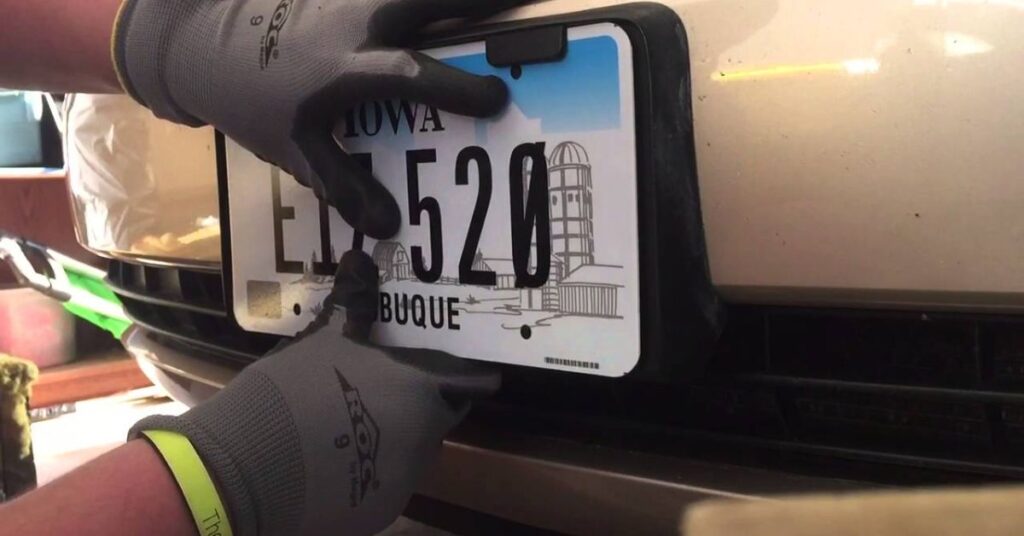
Over time, identifiers and standards are periodically updated to serve evolving registration and road laws. For example, some areas transitioned annual renewal stickers to simply displaying the expiration year within the plate number itself.
Modifications accommodate rising vehicle volumes through expanding numbering systems. Rearranging plate formats maintain clear identification as vehicle demographics change. Constant refinement keeps plate utility optimized relative to present needs on increasingly busy road networks.
Is Fp Part Of the License Plate Number
In most states like Illinois, the two-letter farm plate code like FP sits separate from and precedes the unique plate number itself. So an Illinois farm plate could appear as: “FP 1234”. Here, “FP” signifies the registration type while “1234” distinctively names that individual vehicle license.
Keeping farm codes outside the unique numeric sequence reserves a consistent block of numbers for standard passenger vehicle plates. It also simplifies track farms versus standard vehicles administratively through their distinct front tags. Clear division of identification aids all parties in understanding plates at a glance.
Frequently Asked Questions
What are DL plates in Illinois?
Dealer Registration (DL) Plates issued to a licensed vehicle dealer, trailer dealer, or motorcycle dealer on vehicles held for sale or resale. May not haul on this plate. May be issued to one dealership-owned vehicle under 8000 pounds used to haul parts incidental to the operation of the business.
How do I register my car in IL?
The Electronic Registration and Title (ERT) System allows you to complete and print an Application for Vehicle Transaction(s) (VSD 190) online.
How much is vehicle registration in IL?
$151
Standard tax, title, and license fees charged on a new vehicle in Illinois are as follows: Sales Tax: 7.25% (additional county taxes may also apply) Title Fee: $150. License and Registration Fee: $151.
What does the FP number mean?
The designation FP on a license tag stands for Fleet plate or fleet permanent. These are usually issued for vehicles owned by an organization. It could mean the vehicle is a rental, as some states provide FP plates to these cars registered in their area.
What is FP full form?
- family physician; family practitioner. 2. family practice.
What is an F plate in Illinois?
F plate in Illinois: Farmers rely on these – vehicles used over half their time tilling fields qualify for cost-saving F plates.
What does CP mean on an Illinois license plate?
CP license plate in Illinois: County patronage plates – these proclaim the driver works serving their community’s needs.
What are C plates in Illinois?
C plates in Illinois: Commercial calling cards – trucks bearing C plates deliver goods, keeping industry in motion across the Prairie State.
Who has 1 license plate in Illinois?
1 license plate in Illinois: Only motorcycles may dawn just one small plate out back – their two wheels require no plate up front.
Final Thoughts
Many things were covered about license plate codes. In Illinois, “FP” on plates means it’s a farm plate. This lets people know the vehicle is used mostly for agriculture. Looking closer shows plates have a history and each state has its own rules. Illinois farm plates with “FP” show the driver can get cheaper fees for supporting farms.
Reading about topics explained how plates are designed. They must identify cars clearly but also follow state laws. “FP” plates show this well – they say it’s for farms shortly. Understanding more reveals how movement is managed differently in each place. Similar forms together with special codes help people and rules vary between locations. In the end, decoding plates expand knowledge of registration practices in different states like what “FP” in Illinois stands for.




